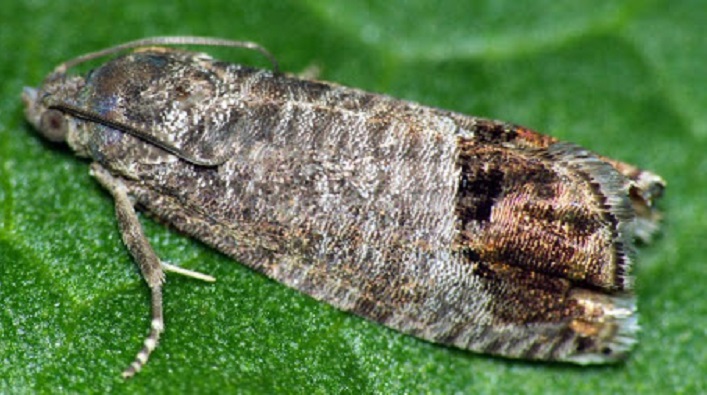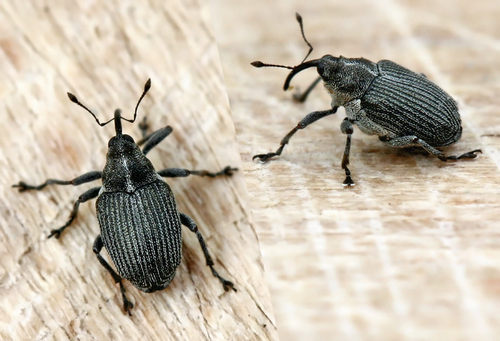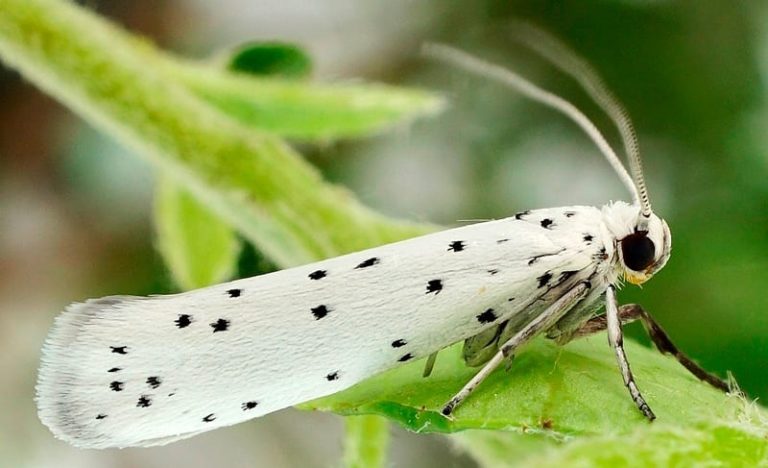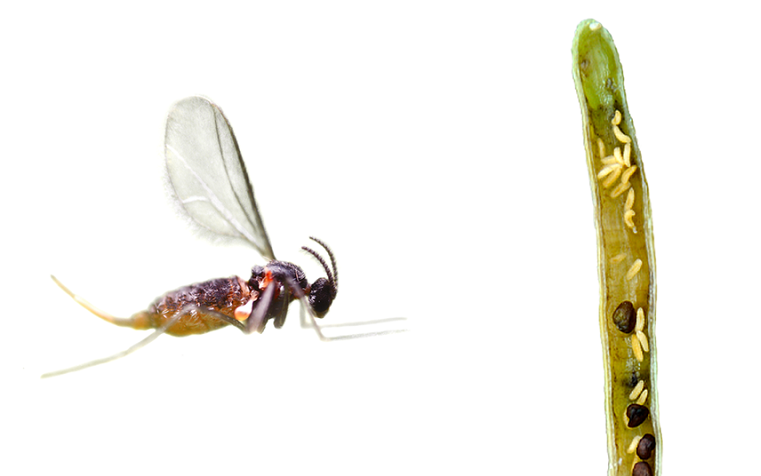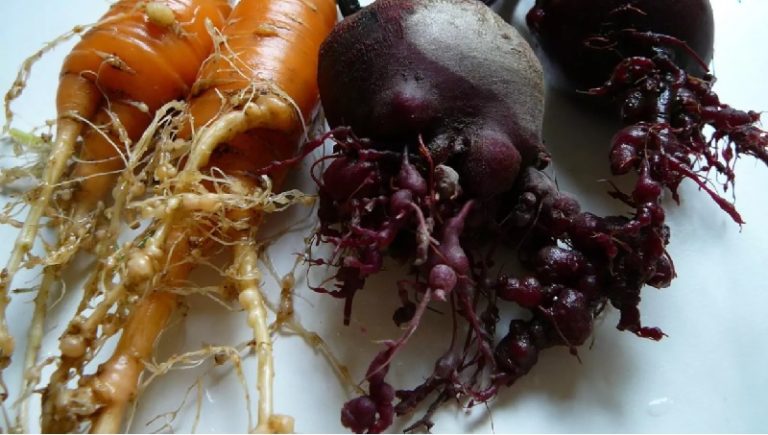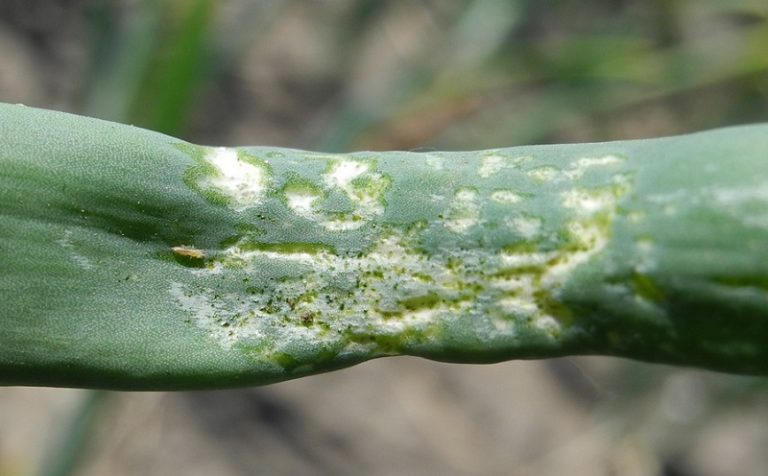Apple codling moth signs of appearance, methods of struggle
The codling moth loves the fruits of apple, pear, peach, plum, apricot, and is one of the most dangerous pests of these crops. Damaged fruits lose their qualities, fall off prematurely.
The codling moth (Carpocapsa pomonella L.) remains a caterpillar of the last age for the winter, it does this under the lagging bark, in cracks in the trunk and skeletal branches, fruit storages, under plant debris.
When the average daily temperature exceeds +10 ° C in spring, the caterpillar turns into pupae. After 14-21 days, when the apple trees begin to bloom, the flight of butterflies begins, this lasts from 1.5 to 3 months. A week and a half after departure, females begin laying eggs, while one female can lay 40-120 eggs. From the outside, these eggs are small droplets of wax, milky green in color, shiny, up to 1 mm in size. Laying occurs one egg at a time on smooth leaves, young shoots and fruits.
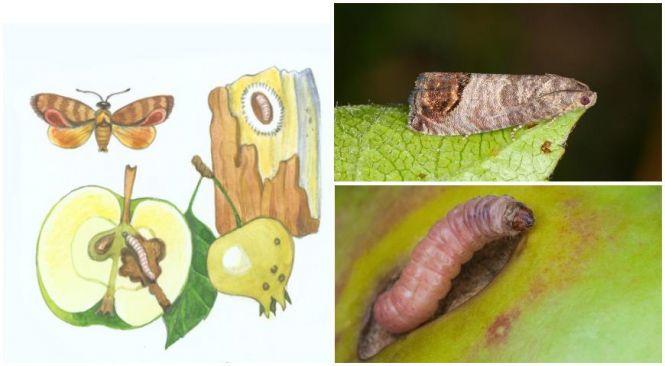
The caterpillar usually appears 17-20 days after the end of flowering, it bites into the fruits in different places. Inside, the caterpillar of the codling moth makes passages in the pulp until it reaches the seed chamber. Over time, it comes out and climbs into the neighboring fruit. This development of the caterpillar lasts about a month. In southern countries, 2-3 generations develop, while it is the 2-3 generations of the codling moth that causes the most harm.
See also:ORCHIDS – ORCHID CARE
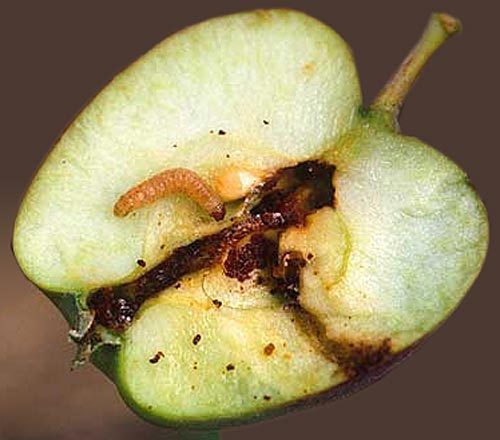
Control measures against the codling moth
It is necessary to monitor the condition of the trees, clean the trunks and skeletal branches from dead bark in autumn and spring. As soon as carrion appears in the garden, trapping belts should be applied to the trunks and skeletal branches, periodically inspect them and destroy the caterpillars that have gathered there. In the evening, you should systematically shake the trees, collect and destroy the carrion.
Spraying trees during the period of mass departure and egg-laying with one of the preparations: Proclaim Fit (d.v. emamectin benzoate, 50 g/kg + lufenuron, 400 g/kg) – 0.1-0.2 l/ha, Piorinex Super c.e. (d.v. chlorpyrifos 400 g/l + bifenthrin, 20 g/l) – 1.5 l/ha, Engio 247, s.k. (thiamethoxam 141 g/l + lambda-cyhalothrin, 106 g/l (0.3-0.4 l/ha), Karate-Zeon (d.v. lambda-cyhalothrin, 50 g/l) – 0.4-0.5 l/ha.
At the beginning – in mid-July, a second treatment should be carried out, the third after 2-2.5 weeks with the same preparations, alternating them with other insecticides.
During the period of mass appearance of caterpillars, you can apply the biological product lepidocide (2.0-3.0 kg/ha), 2-3 treatments with an interval of 10-14 days against each generation of the pest.

